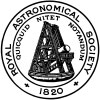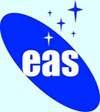Enabling technologies for space-based astronomy and space science
Principal contact: R. Cordey (ralph.cordey@astrium.eads.net )
Organisers: R. Cordey (Astrium, UK), M. Stuttard (Astrium, UK)
Space-based astronomy and space science missions have helped to enrich our understanding of the universe. They have provided us with datasets at previously un-observable wavelengths, or with remarkably high angular resolution or positional accuracy. Amongst the many missions currently under development are the James Webb Space Telescope, the Gaia astrometry satellite and the Herschel infrared observatory. But what new astronomy will technology developments bring us in the future? This session aims to examine some of those technologies and mission concepts that may open up spectacular opportunities for doing science, be it on exo-planets, fundamental physics, the early or high-energy universe (or indeed anything else!).
Papers are welcomed on ideas un-constrained by the current planning by space agencies, but making the link between technology and new science. These could include technologies that underpin future generations of space telescopes, those that exploit multiple spacecraft, or concepts utilising novel observing locations such as the lunar surface or other parts of our solar system
Scientific Programme
| Wednesday 22nd April | ||
| 14:00 | A Practical X-Ray Interferometer | Gillian Butcher |
| 14:20 | Solar Sailing as an Enabling Technology | Malcolm Macdonald |
| 14:40 | OLFAR - Orbiting Low frequency Antennas for Radio Astronomy | Mark Bentum |
| 15:00 | FIRST - A Space-Borne Low-Frequency Radio Observatory using Passive Formation Flying | Jan Bergman |










